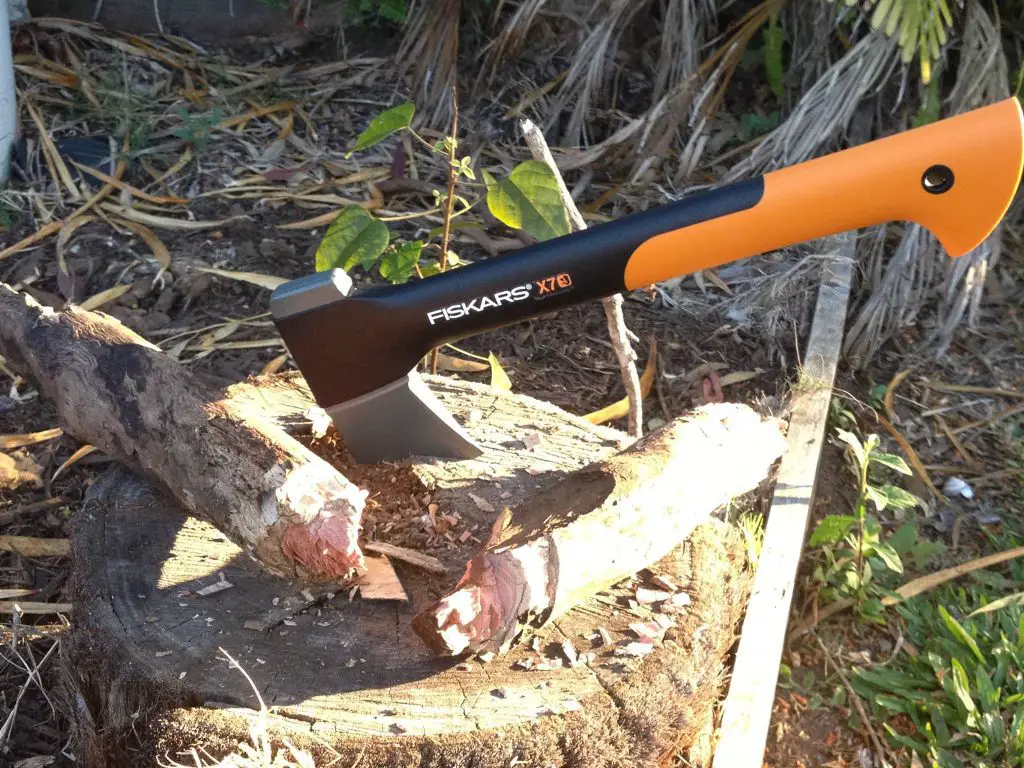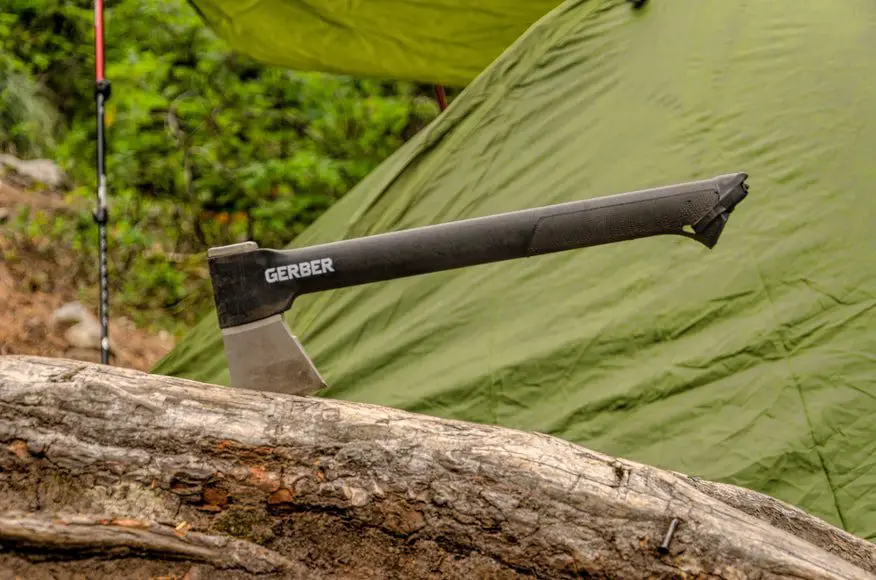Picture a frontier explorer like Davy Crockett, and you’ll probably picture a man with a coonskin cap and a hatchet at his waist. For centuries, the hatchet was an important tool for outdoorsmen of all stripes, and it still captures people’s imaginations to this day. While many people know what a hatchet is associated with, they don’t know the nuances of what this tool actually is.
A hatchet is a handheld tool with a sharp head that is similar to an axe. Hatchets have heads with one side that is a blade and another that is a hammerhead. The handles are short, making it easy to carry a hatchet around and maneuver it.
Here are the details of what you need to know about hatchets.
Table of Contents
What Is a Hatchet?
A hatchet is a sharp handheld tool that is similar to an axe. It is designed to be used with one hand, making it versatile for many different purposes. Hatchets have a short handle and a head that is a sharp blade on one side and a blunt hammerhead on the other.
The unique design of hatchets makes them useful for outdoorsmen because they have a variety of purposes. They can serve as makeshift axes, hammers, and even knives, saving you from the trouble of carrying around multiple tools.

Design Features of a Hatchet
The hatchet has several design features that define it. These features can also help you identify whether you have a hatchet or an axe on your hands, as people frequently mix the two up.
Short handle
The purpose of a hatchet is so you can easily wield it with just one hand. That means the handle is light and short. Usually, the handles are 12–18 inches long and only a few pounds in weight, making it easy to wield and carry around as you explore the outdoors.
Heavy head
Hatchet heads are also very heavy. Although these tools are small, they are powerful.
Double-sided heads
The biggest defining feature of a hatchet is the dual purpose of its head. One side is a blade, similar to an axe blade, and is usually shaped like a V. The other side of the head, or the poll side, is a heavy, blunt hammerhead.

Purposes and Uses
Due to its unique design, the hatchet has many purposes. Their versatility is why these were once favorite outdoor tools.
Cut Wood
Hatchets are obviously used to cut wood. They are best for soft woods since they don’t have the power to go through hardwood. Hatchets are also easier to cut felled trees into pieces rather than felling ones that are still upright. However, wilderness survivalists sometimes use hatchets to cut through the brush.
Split Logs
A hatchet can double as a splitting axe and help you when you’re splitting logs to get them ready for the fire.
Hewing Wood
The unique design of a hatchet means that it can do a lot of tasks that a regular axe cannot, for example, hewing wood. To hew wood is to turn a rounded log into a flattened piece of wood. The shape of the hatchet blade makes it perfect for this task, and some hatchets, called hewing hatchets, are designed just for this purpose.
Recreational Purposes
Hatchets are not just all work and no play. You can use them for recreation and sports. Many hunters carry hatchets to clear paths in the forest, break down carcasses, and even kill animals. Hatchets are also a popular accessory in the sport of axe-throwing.
History of the Hatchet
The hatchet has a long and storied history. The first implements that look similar to hatchets were found in archeological deposits dating back over a hundred thousand years. Independently, humans developed hatchets in Europe, North America, and Asia. However, these early hatchets looked very different from modern ones.
The first tool that looked similar to the modern hatchet was the Franziska axe, a battle axe used by the Frankish troops of Charlemagne in battle. It had a short handle and was designed to be used with one hand. These short axes evolved further in the Middle Ages and Renaissance. The modern hatchet evolved in the eighteenth century, when soldiers carried it.
In North America, indigenous peoples adapted the hatchet and turned it into a different type of axe, a tomahawk. Also in North America, the hatchet was widely associated with frontiersmen, pioneers, and modern armies.
Modern Brands of Hatchet
Today, hatchets are still a very popular tool. Many brands make them, including:
- Husqvarna
- Council Tool
- Bison
- Fiskars
- Gerber Gear
Final Thoughts
Hatchets are an important part of American history due to their role in the frontier and remain an important part of your toolshed today. The double-sided head can help you cut, hammer, and hew wood.
